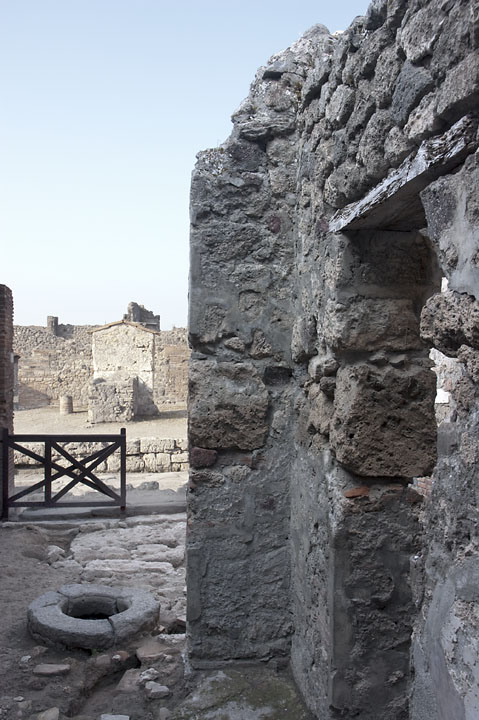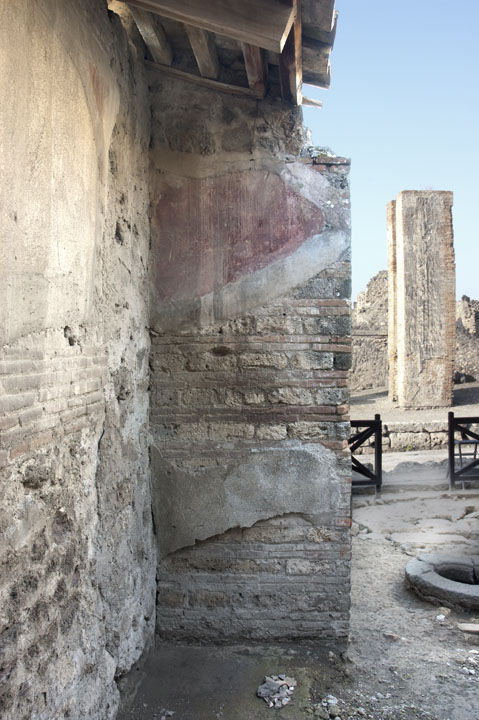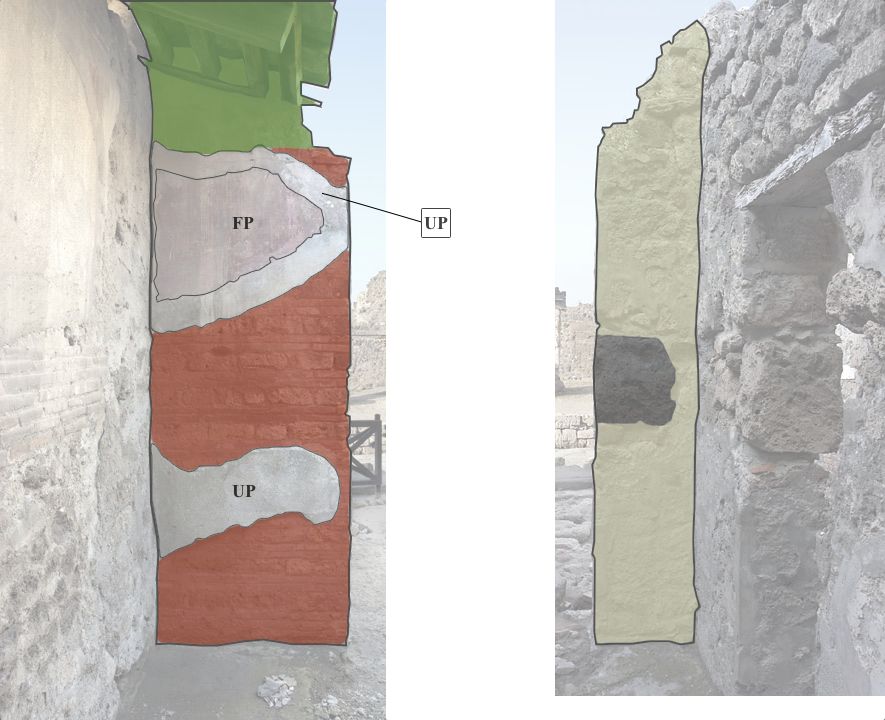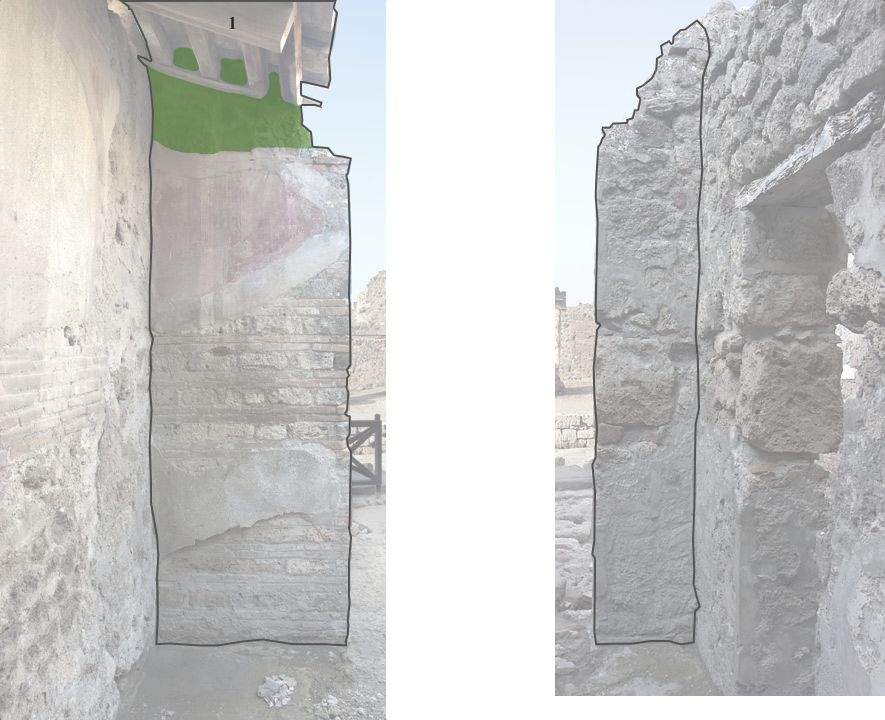West Wall
Description
Mats Holmlund
Ground floor
The west wall is defined by the door leading to room 1.
The south part of the wall is approximately 1.00 m wide and 3.40 m high. It’s built in opus listatum from the floor up until 2.50 m from the ground, and above that, the construction technique changes to opus incertum. The listatum part is made up of two rows of tiles alternating with one row of tufa (in some instances the tufa is replaced by cruma and limestone), except for the row of tiles closest to the floor, where there are four tiers of tiles.
The north part of the wall is circa 0.50 m wide, 3.20 m high and built in three different styles. From the floor up until circa 1.10 m, the wall is built in some kind of "opus listatum". From 1.10 to circa 2.50 m from the floor, the style changes to "opus quadratum", and above that, the wall is built in opus incertum. The listatum part of the wall is made up of alternating rows of tile and stones (limestone, lava and cruma), but the pattern is so irregular that it perhaps should be characterized as "opus quasi-listatum". The quadratum part of the wall is made up of rather "scruffy"-looking limestone blocks of different sizes, and the incertum part of the wall consists of limestone, lava, cruma and tufa.
There are no particular features in the wall, except the doorway leading into room 1. The door is circa 1.60 m wide and 2.50 m high. There’s also (a part of) the protective roof of the south wall, attached to the incertum part of the south part of the wall.
The mortar in the listatum part is yellowish grey and contains grains of lava and limestone. The mortar of the incertum part on top of it is dark grey and contains bits of lava. This indicates that the incertum part was built when the roof above the south wall in room 2 was constructed.
The mortar of the different parts of the north part of the wall differs from each other. The mortar of the quasi-listatum part is yellowish grey that contains grains of lava, limestone and cruma. In some places, modern grey mortar (that contains grains of lava, limestone and som bits of lapilli) has been applied on top of the original mortar. The mortar of the quadratum and incertum parts is dark grey and contains grains and some larger bits of lava. This mortar is probably modern since it covers a lighter grey mortar that is visible in some areas.
There are two areas where the wall plaster is extant. The first area is approximately 0.95 m wide, 0.70 m high and is located in the south corner and circa 0.45 m from the floor on the south part of the wall. The plaster only consists of subsurface, is badly weathered and about to fall from the wall. The area is partly held in place by modern mortar.
The second area is 0.90 m wide and 0.60 m high. It’s located above the first area, in the south corner, circa 1.75 m from the floor and on the south part of the wall. The paint and decoration of the plaster is still preserved and is of the same type as on the south wall. The plaster is held in place by a band of pinkish, modern mortar that surrounds it.
Upper floor
Since the upper floor of room 2 also spanned room 3, the west wall of the current room also includes the west wall of room 3. However, the only part of the wall that’s tall enough to be a part of the upper floor is the last bit of incertum wall by the north wall of room 3. This part of the wall is circa 1.50 m wide and 0.70 m high in its highest place (on average, it’s about 0.25 m high). The wall is made up of limestone, lava, cruma and tufa.
The mortar of the wall is dark grey and contains grains of lava and limestone. It has probably been applied to the wall in recent times to prevent erosion.




